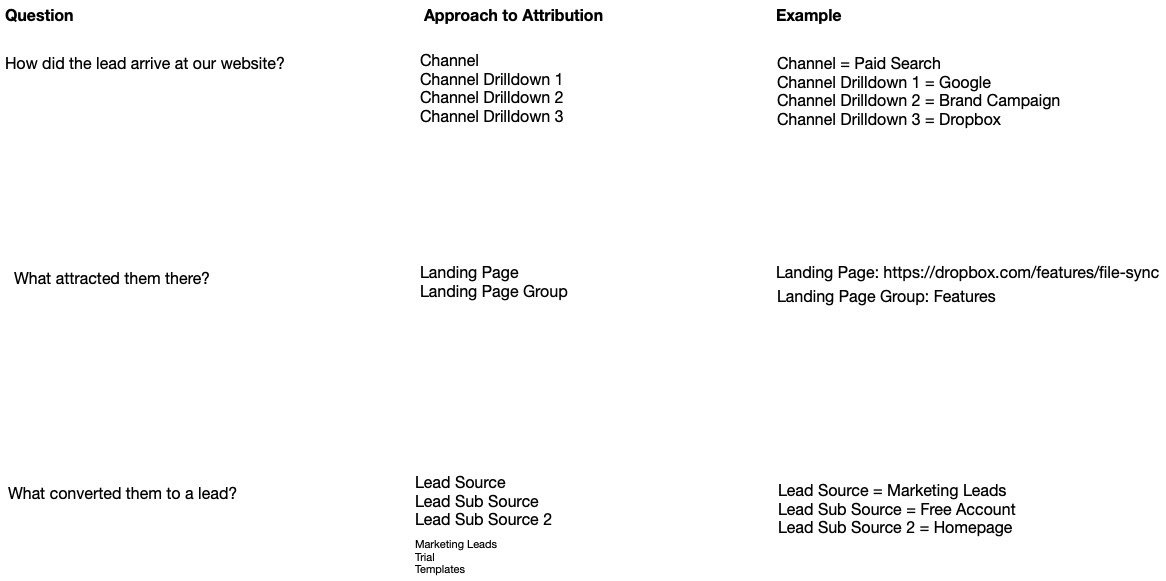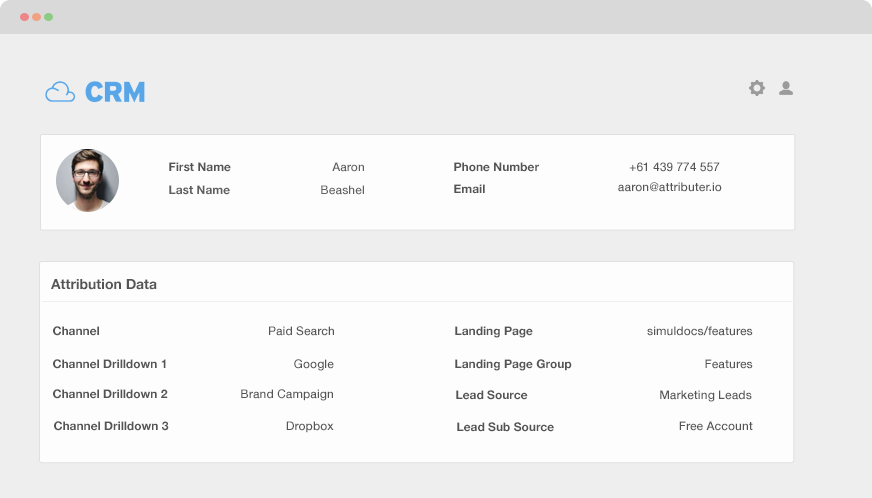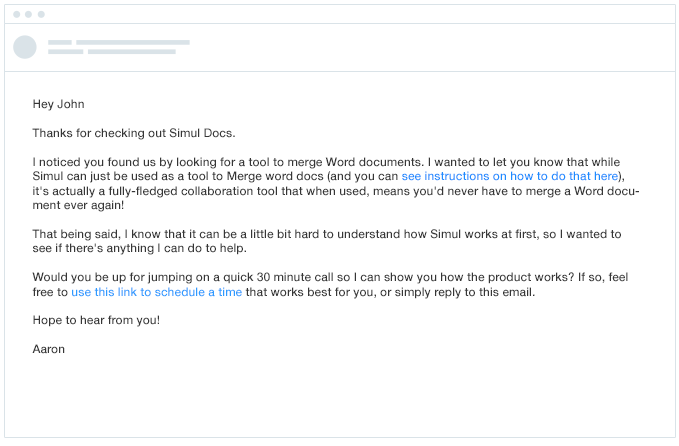When a new lead is generated by marketing and comes into your CRM, how do you personalize your initial outreach?
It’s likely you probably look the lead up online and personalize the email sequences based on some type of demographic or firmographic data, like their industry and company size.
We used to do that at Simul too, but we found a more effective way. We’ll explain how we’ve been using marketing attribution data to personalize our outreach and how it’s netted us an extra $100k in annual revenue.
Related: 11 Must-Follow Rules for B2B Email Introductions
What is marketing attribution data?
In a B2B context, marketing attribution data is information about how a lead became a lead. It’s primarily used to inform you how people are finding your business and becoming leads with the idea that you can then double down on the things that are working and stop the things that aren’t.
There are typically three aspects of effective marketing attribution data:

Each aspect of attribution answers a fundamental question you want to answer about your leads. Channel informs you how people got to your website, landing page lets you know what content attracted them there, and lead source informs you how that person converted to a lead.
So in the case of our example lead above, we can see he originally arrived at our website (we’re Dropbox in this example) via our Paid Search ads on Google, and the ad he clicked on belonged to our Brand Campaign. We can see the first page he arrived on was the File Sync page in the Features section of our website, and we can see that he converted into a lead by creating a Free Account.
How we use marketing attribution data to personalize our outreach at Simul
Firstly, some backstory. Simul Docs is a version control and collaboration tool for Microsoft. It’s used by salespeople to collaborate on documents like sales contracts as an alternative to the painful process of emailing contracts back and forth and using MS Word’s track changes feature to identify what changed.
That said, here’s how we use marketing attribution data to personalize our outreach.
1. Capture marketing channel data in our CRM
The first step we took was to make sure we were capturing marketing channel data in our CRM.
We use a tool called Attributer.io to do this. It’s a small piece of code that you place on your website that looks at the UTM parameters and determines where the visitor came from (i.e. paid search, paid social, organic search, email marketing, etc).It also looks at the first page your visitor landed on and the group of pages this page belongs to.
Attributer then stores all of this information and when the visitor completes a form, it writes this information to hidden fields we added. This information is then passed into our CRM alongside the information the lead entered about themselves.

2. Identify the lead’s intent
Now that the data is coming into our CRM, the next step is for sales reps to use it to identify the lead’s buying intent. We get most of our leads through organic search and we have a number of different pages that rank.
We have a page that ranks for version control for Word and one that ranks for merge Word documents.
When people come in through the version control page, they’re typically already doing version control on their documents (usually with some crazy file name like ‘Contract V8_FINALFINAL’) and are looking for a tool to help them automate the process.
On the other hand, people who come in through the merge Word documents page have a very different level of intent. They typically just have two-word documents that they need to merge and aren’t necessarily looking for a tool – they’re just looking for a quick way to solve their problem.
So by using this data and a bit of an understanding of our customers, we’re able to understand the intent that each lead has. We know when people are looking for a software tool to automate their version control, and we know when people are just looking for a way to solve a temporary problem they have.
3. Personalize the outreach
Based on our new understanding of the lead’s intent, we then personalize the messaging in our outreach emails and calls. Continuing our example from above, if someone comes in from the version control page after searching for ‘version control for Word’, we send them this:

Because we’ve identified their intent is to find a tool, we focus on getting them up and running with it. We talk about how our product is the world’s only version control tool for Word, we link to case studies that talk about how some of our customers use it to version control documents, and we offer guides and the option to jump on a call with one of our sales reps.
But the people who come in through the merge page after searching for ‘merge Word documents’ get a different message tailored to where they’re at.

Because we’ve identified they’re not necessarily looking for a new tool to version control Word docs but instead are just looking for a way to merge two documents they have, this email focuses more on selling our product to them and increasing their motivation to use it.
It highlights the pain points of their old way and presents our brand as the solution to those problems as opposed to trying to tell them how to use a product they’re not overly motivated to use.
The results
Prior to implementing Attributer.io and starting to personalize our outreach based on buying intent, we had some other outreach sequences we would send based on Industry, and we had been sending them for over a year.
We decided to take a look and understand which was actually performing best:
| Email Type | Open rate | Click Rate | Reply Rate | Meeting Rate |
|---|---|---|---|---|
| Industry personalization | 70% | 10% | 15% | 2% |
| Intent personalization | 74% | 34% | 38% | 19% |
The email outreach sequences that we’d send based on buying intent far outperformed the others in terms of opens, clicks, and most importantly, responses and demos booked. Based on our conversion rates through the funnel and average deal size, we estimate this change resulted in an additional $100k of closed-won deals each year.
Wrapping up
By personalizing our outreach sequences based on marketing attribution data like channel and landing page, we’ve been able to close an extra $100k in revenue per year. The best part is that it’s essentially free money. We still spend the same amount on marketing and still have the same number of salespeople. So get marketing channel attribution data flowing into your CRM today and give it a try at your company.



